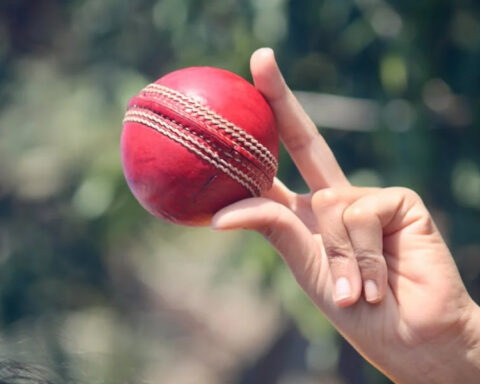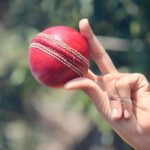Mumbai/ TNF
Cricket, often known as the “gentleman’s game,” is a sport full of strategic nuances. Whether it’s the power of a fast bowler, the accuracy of a spinner, or the unpredictability of a swing bowler, every bowler brings their unique skills to the game. However, when it comes to left-hand bowlers, many batters find themselves at a distinct disadvantage. The left-handed bowling style presents unique challenges that can throw even the most experienced batters off their game.
In this story, we explore why left-hand bowling is difficult for batters and provide real-life examples and data to understand the reasons behind this challenge.
The Basics of Left-Hand Bowling
To begin, let’s understand what left-hand bowling means. In cricket, a bowler can either be right-handed or left-handed, just like in many other sports. The main difference between the two is the direction in which the ball spins or swings. Right-handed bowlers deliver the ball from the right side of their body, while left-handed bowlers do the same from the left side. This small difference in stance, however, creates significant problems for batters.
The Angle of Attack
One of the primary reasons left-hand bowling is challenging for batters is the difference in the angle of attack. Left-handed bowlers often approach the batter from an angle that feels unnatural to most right-handed batters. When a right-handed bowler delivers the ball, the batter is used to seeing the ball coming from a certain direction. However, when a left-handed bowler takes their stance, the line of attack changes.
For example, if a left-arm fast bowler, like the legendary Mitchell Johnson, is bowling to a right-handed batter, the ball comes in from an angle that is harder to judge. Johnson, known for his swing and bounce, could make the ball move into the batter, creating a greater risk of getting caught out.
For left-handed bowlers who spin the ball, the ball moves in a different direction compared to a right-arm spinner. A left-arm orthodox spinner (someone who turns the ball from off to leg) delivers the ball with a natural spin that goes away from the right-handed batter. This means the batter has to adjust their defense or shot-making style.
The Psychological Factor
When it comes to cricket, mental strength is as important as physical ability. Batters spend countless hours training against right-handed bowlers, but left-handed bowlers can mess with their mental game. The unfamiliarity with left-handed bowlers can make batters hesitant or unsure about how to react.
Take, for example, the famous English batter Alastair Cook. Throughout his career, Cook has faced many top bowlers, including left-arm bowlers like Mitchell Johnson and Rangana Herath. Cook once admitted in an interview that left-arm spinners often troubled him because he was not as used to their line and length as he was to the more conventional right-arm spinners. The slight psychological disadvantage of not being familiar with the bowler’s delivery can create a significant gap in performance, especially when under pressure in a big match.
The Natural Movement of the Ball
Another factor that makes left-hand bowling difficult is the natural movement of the ball. Left-arm fast bowlers often get the ball to swing in the opposite direction compared to right-arm fast bowlers. For example, a right-handed batter is more accustomed to the ball moving away from them when bowled by a right-arm fast bowler, but a left-arm bowler may swing the ball in toward the batter. This unexpected inward swing can be tricky to judge, and it often leads to batters being caught out or playing poorly timed shots.
In the 2015 Ashes series, Australia’s left-arm fast bowler Mitchell Johnson’s ability to swing the ball both ways was a key factor in his success. His reverse swing with the ball coming in at right-handed batters often forced errors, leading to quick dismissals. His left-arm deliveries were an added threat that many English batters struggled to cope with, showing how left-handed bowling can be more challenging than one might think.
The Fielding Setup
Left-arm bowlers also create different fielding setups. Since they bowl from the opposite side, the field placements and angles must be adjusted. For instance, in a test match, a left-arm fast bowler may have fielders on the leg side to catch balls that the batter may not anticipate. For a right-handed batter, this means adjusting to not only the bowler’s pace and spin but also the fielders’ positions.
In limited-overs formats like One-Day Internationals or T20s, the presence of a left-arm bowler forces a batter to quickly adjust to different fielding restrictions. For example, a left-arm fast bowler may aim for the batter’s off stump, but with fielders placed differently, the batter may be forced to either attack or defend shots in unusual ways.
Real-Life Examples of Left-Hand Bowling’s Impact
Mitchell Johnson (Australia): As one of the most feared left-arm fast bowlers of his time, Mitchell Johnson wreaked havoc on opposing teams, especially during the 2013-2014 Ashes series. His ability to swing the ball into right-handed batters and his aggressive pace made him a deadly threat. His success was partially due to batters being less accustomed to his left-arm angle, which made it difficult to judge the line and length of his deliveries.
Rangana Herath (Sri Lanka): Another prime example is Rangana Herath, a left-arm orthodox spinner who was a constant challenge for right-handed batters in the longest format of the game. Herath’s ability to bowl with accuracy and turn the ball away from right-handed batters often left them trapped on the back foot. His consistency and skill earned him over 400 Test wickets, with many coming against unsuspecting batters who had trouble adjusting to his line and spin.
Wasim Akram (Pakistan): Though a right-arm bowler, Akram’s ability to swing the ball both ways in the late stages of his career often gave him the edge over batters. His mastery of reverse swing is something that left-arm bowlers like Johnson and Herath adopted, further emphasizing the importance of adjusting to different lines and deliveries.
Data and Statistics
According to statistics from the International Cricket Council (ICC), left-arm fast bowlers have a lower batting average against right-handed batters compared to right-arm fast bowlers. In limited-overs formats, left-arm bowlers tend to bowl at a higher strike rate, suggesting they often get more wickets from right-handed batters. For instance, in ODIs, left-arm bowlers have a collective strike rate of around 33, compared to right-arm bowlers who average 35. This difference in strike rate highlights the difficulty batters face when facing left-arm bowlers.
Conclusion
In the world of cricket, left-hand bowling is a challenging proposition for batters. The different angles, movements, and psychological hurdles that left-arm bowlers create make them a constant threat. While batters train tirelessly to face right-arm bowlers, left-arm bowlers often catch them off guard. This difference in delivery styles can be the difference between success and failure at the crease.
As we’ve seen with bowlers like Mitchell Johnson, Rangana Herath, and others, left-handed bowlers bring a unique challenge to the game of cricket. It’s a reminder that even the most seasoned cricketers must continuously adapt to new challenges, whether it’s the ball swinging in, the turn of a spinner, or the angle of a left-arm bowler.









